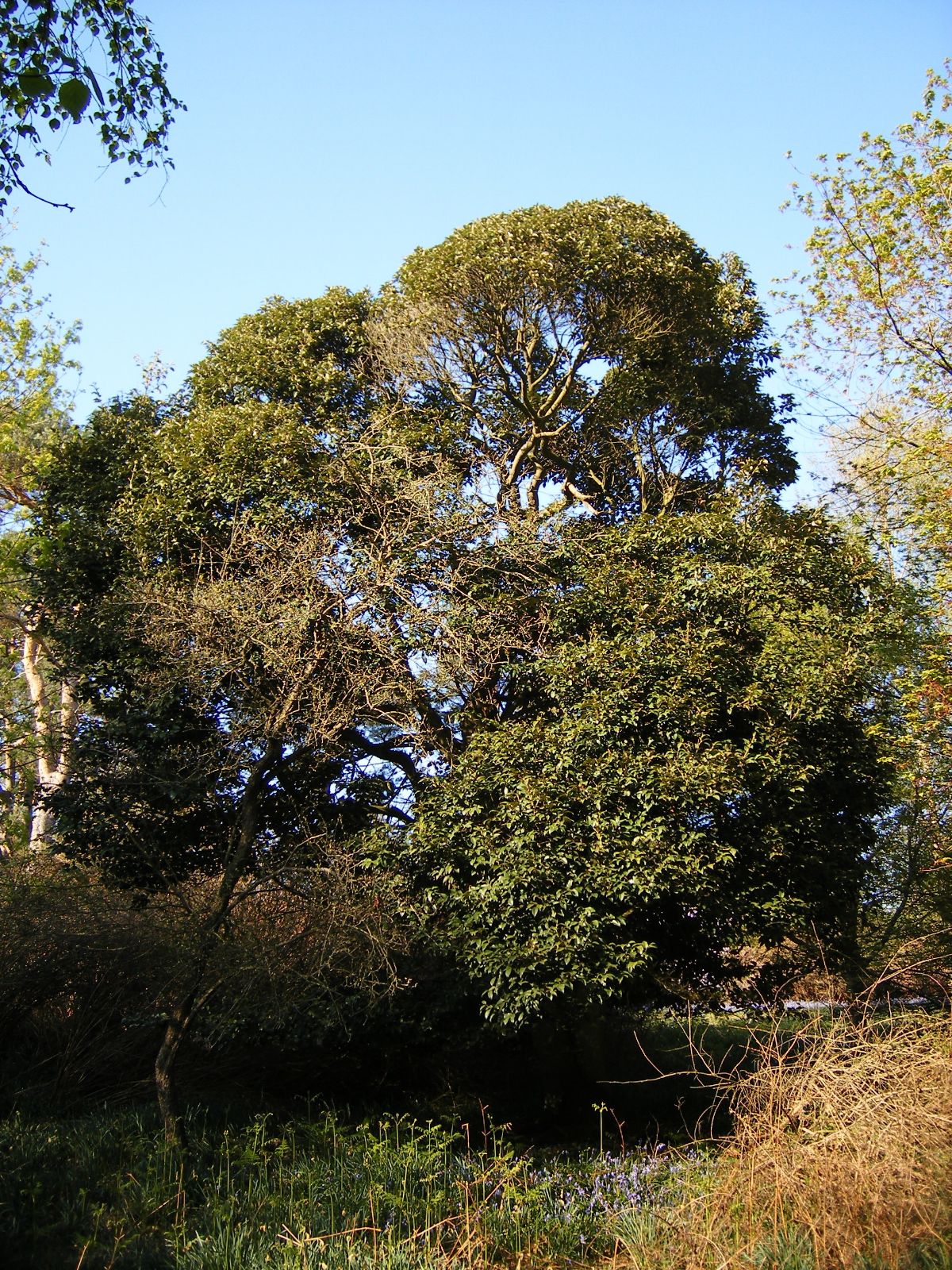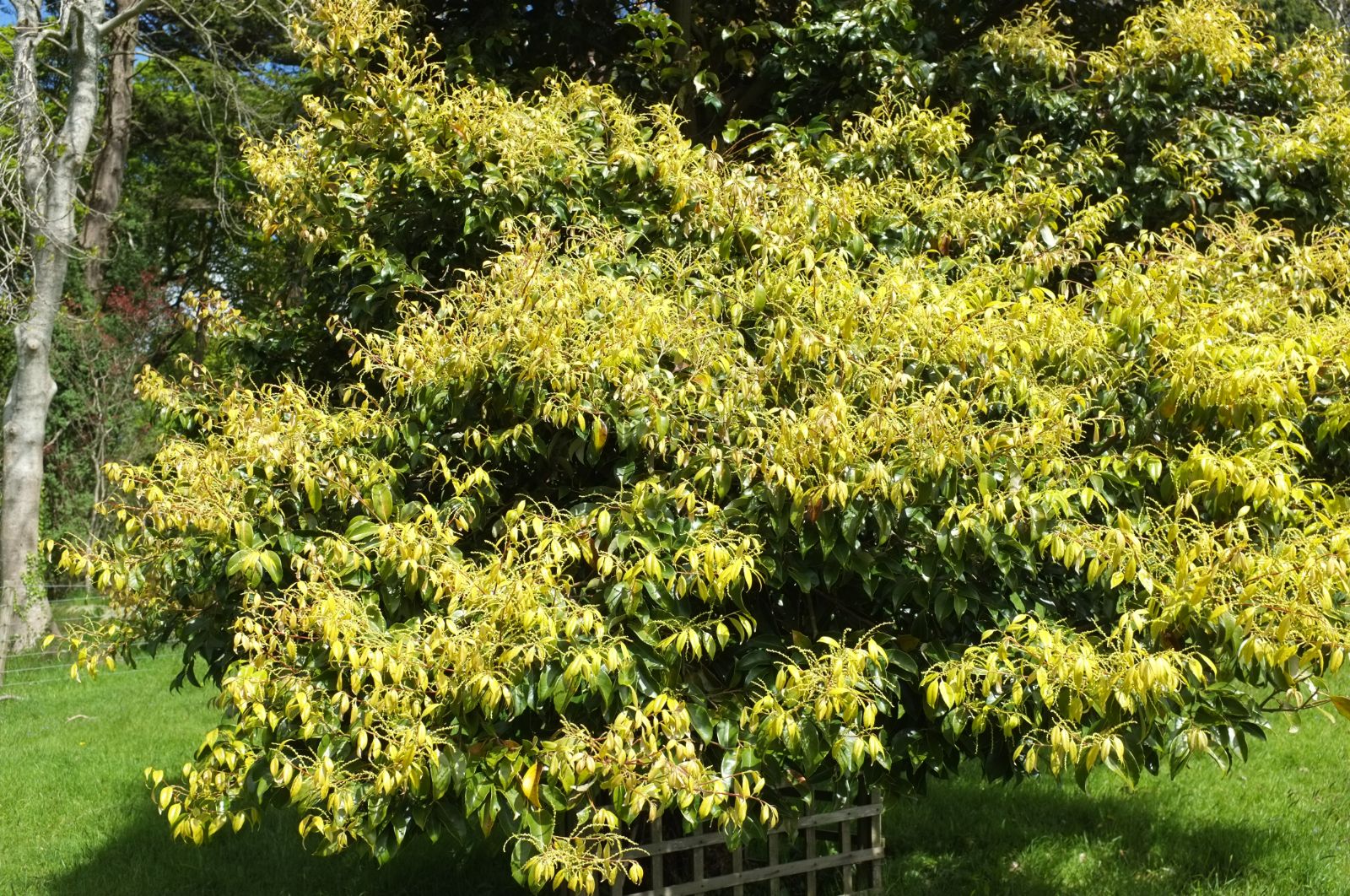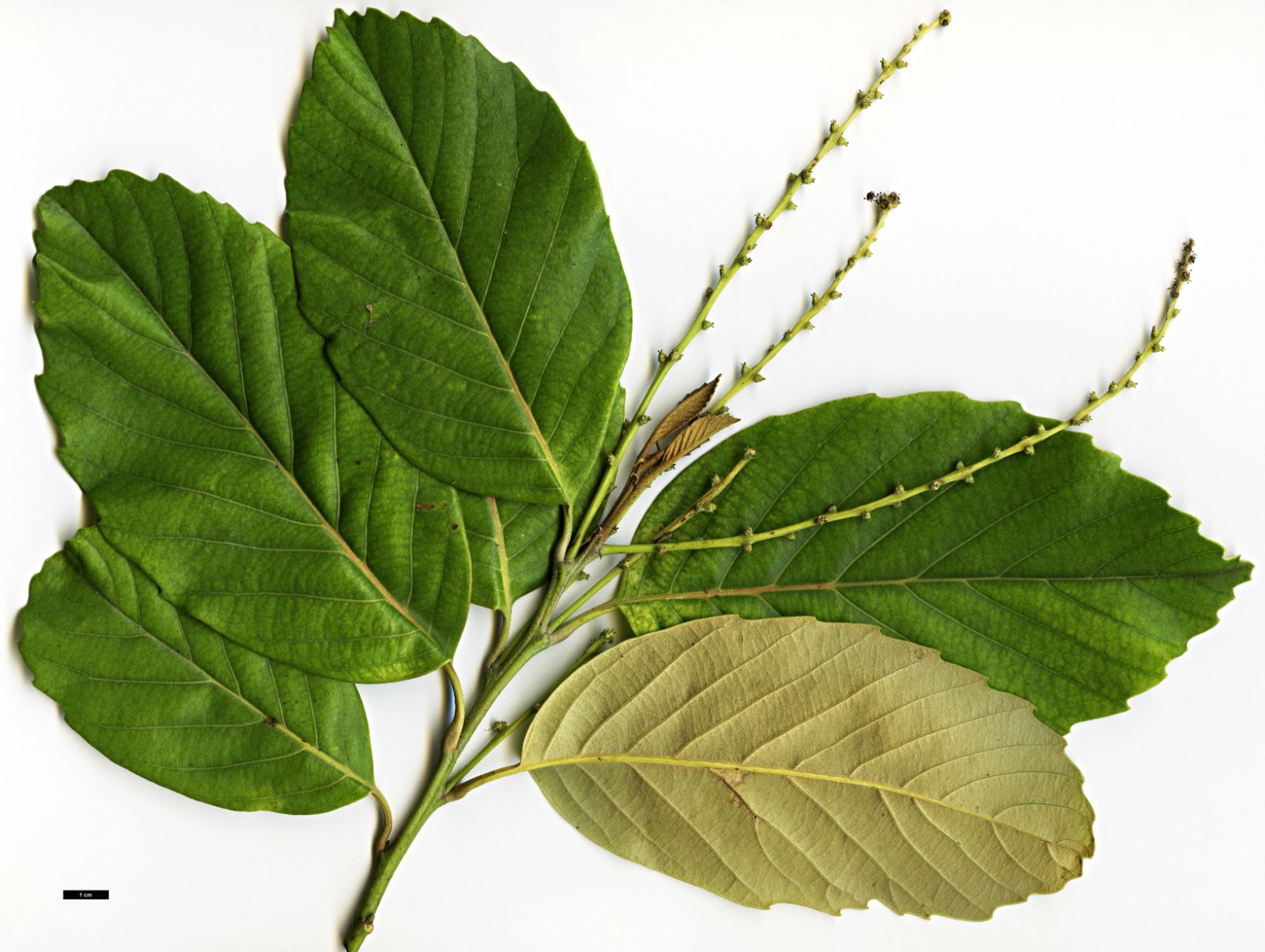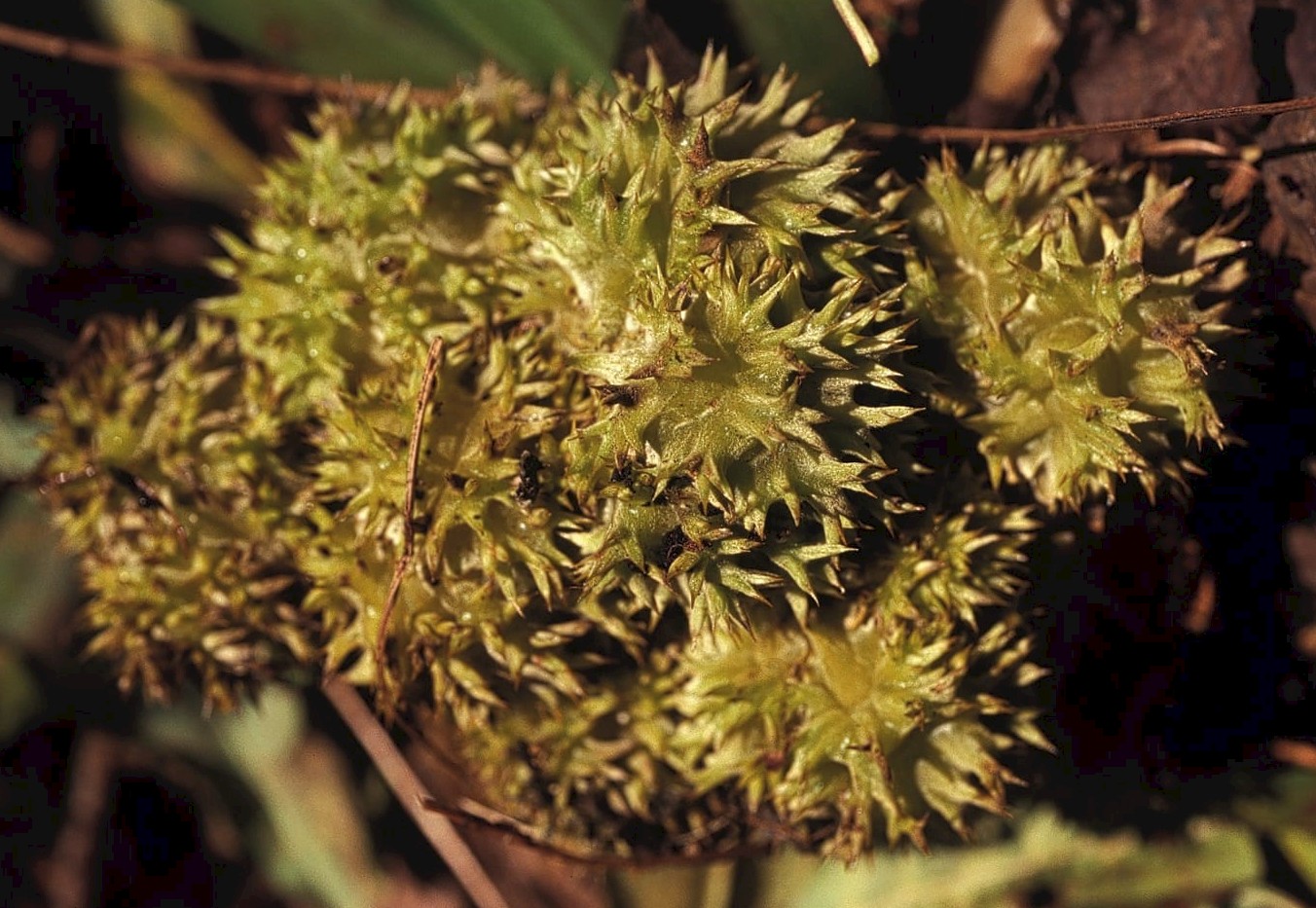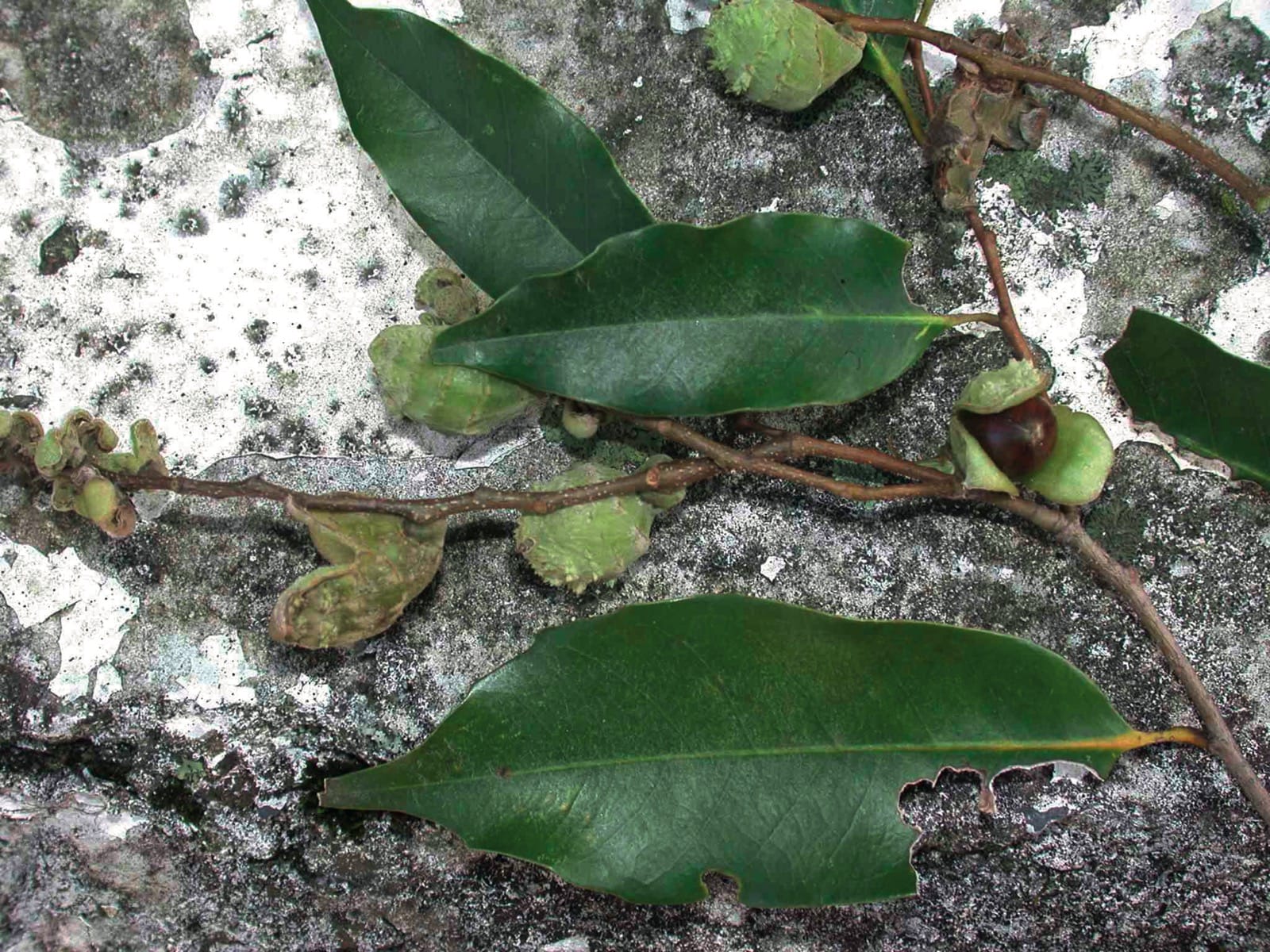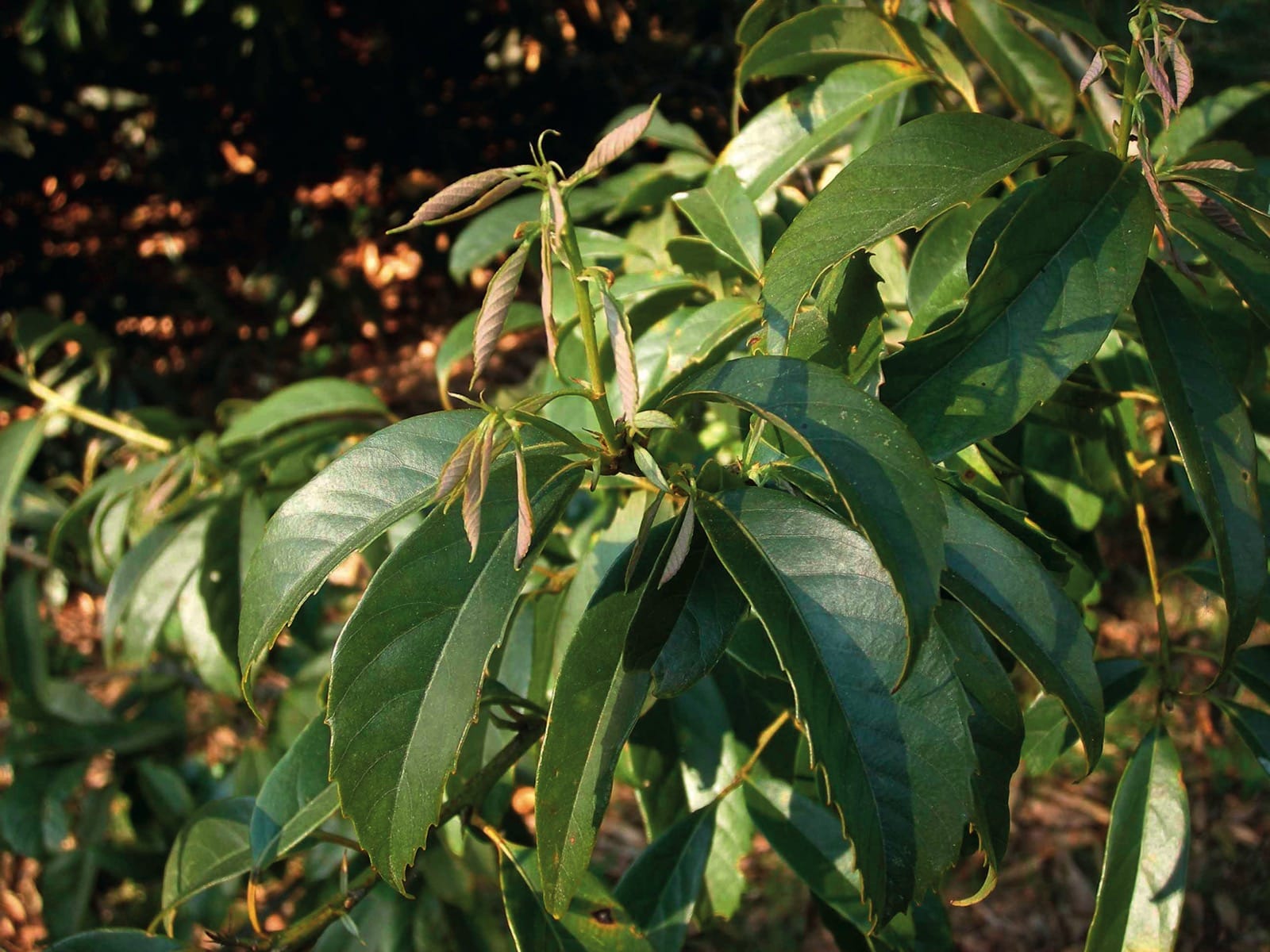Castanopsis
Credits
Article from Bean's Trees and Shrubs Hardy in the British Isles
Article from New Trees by John Grimshaw & Ross Bayton
Recommended citation
'Castanopsis' from the website Trees and Shrubs Online (treesandshrubsonline.
Family
- Fagaceae
Common Names
- Berangans
- Indian Chestnuts
Castanopsis comprises 134 species in tropical and subtropical Asia and Malesia (Govaerts & Frodin 1998). They are evergreen trees with alternate, distichous (rarely spirally arranged) leaves. The terminal buds are ovate to ellipsoid with decussate scales. Stipules are extrapetiolar. Castanopsis is monoecious, and the inflorescences are usually unisexual; they are erect, spicate or paniculate. The staminate flowers are small and grouped in fascicles of three to seven (rarely solitary); the pistillate flowers are solitary or in clusters of three to five (to seven) per cupule. The cupule is solitary, radially or bilaterally symmetric, rarely indehiscent and partially or completely enclosing the fruit; it is covered in spiny or scaly bracts or tubercles. The fruit is a nut, one to three in each cupule; these typically mature after their second year (Huang et al. 1999).
Bean (1976a) commented that the genus Castanopsis was hardly represented in British gardens – a statement that is still largely true for the whole of our area, as was further deplored by Peter Wharton (pers. comm. 2007). One clue to this scarcity may be found in a commment by Allen Coombes (pers. comm. 2007): ‘I actually hate collecting them because of the hours I have spent shredding my fingers trying to get the seeds out of spiny husks only to find they are mostly not ripe or already eaten by insects.’ With the exception of the Japanese species C. cuspidata and C. sieboldii, these broadleaved evergreens are essentially tropical or subtropical in origin; they can be thought of as tropical chestnuts, differing only slightly from Castanea (Mabberley 1997a), and the fruits are sometimes used as chestnut substitutes. They will need maximum shelter to succeed, preferably in a lime-free soil (Hillier & Coombes 2002), but when happy can grow extremely well and could become very large. A young plant of C. delavayi (described by Bean) at Tregrehan put on more than 8 m of growth in five years (T. Hudson, pers. comm. 2005); see also the account below of C. carlesii in Vancouver. In addition to the species described here, there are young plants of C. fargesii Franch. at Tregrehan, and C. platyacantha Rehder & E.H. Wilson was offered for sale by a UK nursery in 2006. Peter Wharton identified C. tibetana Hance as a particularly fine and probably hardy species that has not yet been introduced.
Bean’s Trees and Shrubs
Castanopsis
A large genus of evergreen trees, natives of the warm temperate regions of eastern and southern Asia and allied to Quercus and Castanea. The fruit is entirely enclosed as in sweet chestnut, but the involucre splits irregularly, and, as in some species of oak, the fruit takes two years to ripen; as in Castanea, the male flower-spikes are upright. The well-known Castanopsis chrysophylla is now considered to represent a distinct genus – see Chrysolepis. With its departure, Castanopsis becomes a genus almost unrepresented in British gardens. In addition to the two species described here, C. concolor is in cultivation at Caerhays Castle, Cornwall, raised from seed collected by George Forrest in Yunnan, China (F. 24758).
From the Supplement (Vol.V)
The specimens of C. concolor at Caerhays, Cornwall, measure 49 × 3 ft and 46 × 31⁄2 ft (1984). C. cuspidata in the same collection is 42 × 5 ft (1984).

